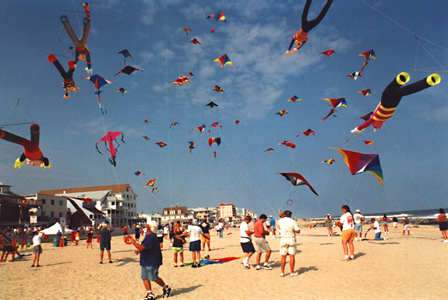
Just about everybody has flown a kite at one time or another in their life. It was probably some cheap store bought rig that flew poorly and really wasn't much fun to fly. You won't find a good kite for $1.49 at a Stop And Shop. But good quality kites can be bought that will open up a whole new world of kite flying for anyone.
Up until recently, most Stop And Shop kites were Diamond Kites. These kites like a medium breeze and require a tail. Most kites sold today are Deltas. They fly much better and easier than their Diamond brothers, will take to the air with less wind so they're more stable, and usually are flown without a tail. Still, these Stop And Shop kites are cheaply made, small, and unimpressive.
Hobby kites are made which are of superior quality and come in a variety of designs. They don't come cheap. A good hobby kite can cost $50 or more, plus string and reel. Some are good choices for children to fly, but many are not because, in a strong wind, some of these kites can actually lift a small child off their feet. In fact, one design, called a Parafoil, has been used by the military to lift cargo.
Below are some of the kites in Lance's kite collection as well as descriptions, suggestions, and information. All of these kites were purchased from INTO THE WIND.




